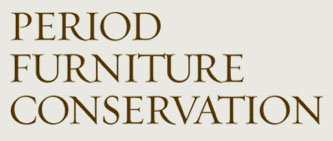During Treatment
After Treatment
Animal damage can be particularly tough to repair, since it destroys some of the original material of the object and leaves all kinds of irregular surfaces. Here's an example of a piece of furniture that suffered particularly badly.
Initial Condition:
The family dog chewed the table's base at numerous points, actually severing one of the three legs from the pedestal.
Our task was threefold:
- Preserve all the surviving original material.
- Bring back structural and aesthetic integrity.
- Ensure that all treatments are completely reversible, leaving no permanent impact on the original material, including the delicate Japanned finish.
Treatment:
The approach was painstaking but straightforward. First, we crafted a small piece of wood to replace the lost sliding tapered dovetail that joined the leg to the pedestal. Next, we carved a new shoulder for the damaged leg out of bulk epoxy. Finally, we joined the pieces together with the appropriate adhesives (3 different compounds were used in this process), making sure to apply a barrier coating to the original elements so that our repair can be readily removed if needed.
After Treatment:
The fully conserved piece, with structural integrity reestablished and in-painted to emulate the japanned finish on the replacement elements. To the naked eye, this is virtually indistinguishable from the object prior to damage.




